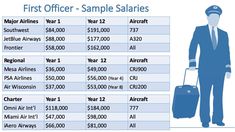Military Jet Pilot Salary

The salary of a military jet pilot varies significantly depending on factors such as rank, experience, branch of service, and country. Military jet pilots are highly trained professionals who play a critical role in national defense, and their compensation reflects both their expertise and the demands of their job. Below is a comprehensive breakdown of military jet pilot salaries, including influencing factors, benefits, and comparisons across different nations.
Factors Influencing Military Jet Pilot Salaries
1. Rank and Experience
Military jet pilots typically begin their careers as junior officers (e.g., Second Lieutenant or Ensign) and progress through the ranks (e.g., Captain, Major, Lieutenant Colonel, etc.). Salaries increase with rank and years of service. For example, in the U.S. Air Force, a newly commissioned pilot might earn around 40,000 annually, while a Colonel with 20+ years of experience could earn over 100,000.
2. Branch of Service
Different branches of the military (e.g., Air Force, Navy, Marines) offer varying salary scales. Fighter pilots in the U.S. Navy or Marines, for instance, may receive additional allowances for flight duty or hazardous assignments, which can increase their overall compensation.
3. Flight Hours and Specialization
Pilots who accumulate more flight hours or specialize in advanced aircraft (e.g., F-16, F-35, or stealth jets) often receive higher pay due to their expertise and the critical nature of their missions.
4. Geographic Location
Pilots stationed in high-cost-of-living areas or overseas bases may receive additional housing and cost-of-living allowances, boosting their overall income.
5. Country of Service
Military jet pilot salaries vary widely by country. For example, U.S. pilots generally earn higher salaries compared to their counterparts in countries with smaller defense budgets, such as Canada or Germany.
Military Jet Pilot Salaries by Country
United States
- Entry-Level (O-1 to O-3): 40,000–70,000 annually
- Mid-Career (O-4 to O-6): 80,000–120,000 annually
- Senior Officers (O-7 and above): $130,000+ annually
U.S. military pilots also receive benefits such as housing allowances, healthcare, and retirement pensions, which significantly enhance their total compensation.
United Kingdom
- Junior Officers (Flying Officer): £30,000–£40,000 annually
- Senior Officers (Squadron Leader): £50,000–£70,000 annually
The UK offers additional allowances for flight duties and overseas deployments.
Canada
- Lieutenant: CAD 50,000–CAD 60,000 annually
- Major: CAD 80,000–CAD 100,000 annually
Canadian pilots receive benefits like housing subsidies and comprehensive healthcare.
Australia
- Lieutenant: AUD 70,000–AUD 90,000 annually
- Wing Commander: AUD 120,000–AUD 150,000 annually
Australian pilots enjoy generous leave policies and retirement benefits.
India
- Flying Officer: ₹800,000–₹1,000,000 annually
- Group Captain: ₹1,500,000–₹2,000,000 annually
Indian pilots receive additional perks such as free housing and education allowances.
Additional Benefits and Allowances
Military jet pilots often receive a range of benefits that supplement their base salary:
- Flight Pay: Additional monthly stipend for active pilots (e.g., 250–840 in the U.S.).
- Hazardous Duty Pay: Compensation for high-risk missions or combat zones.
- Retirement Pensions: Guaranteed pension after 20 years of service in many countries.
- Healthcare and Education: Free or subsidized healthcare and education benefits for pilots and their families.
Comparing Military vs. Civilian Pilot Salaries
Civilian airline pilots typically earn higher base salaries than military pilots, with experienced captains earning 200,000–300,000 annually. However, military pilots enjoy job security, comprehensive benefits, and the prestige of serving their country. Additionally, military experience can open doors to high-paying civilian roles in aviation or defense industries.
Career Progression and Long-Term Earnings
Military jet pilots can advance to leadership roles, such as squadron commanders or senior staff officers, which come with higher salaries and responsibilities. Retirement pensions, often 50–75% of base pay, provide financial security after 20–30 years of service. Many retired pilots also pursue lucrative careers in aerospace, consulting, or government contracting.
Challenges and Trade-offs
While the salary and benefits are attractive, military jet piloting is demanding. Pilots face high-stress environments, frequent deployments, and the risk of injury or death. Balancing family life with military commitments can also be challenging.
FAQ Section
How much does a U.S. Air Force fighter pilot earn?
+A U.S. Air Force fighter pilot's salary ranges from $40,000 for entry-level officers to over $100,000 for senior officers, with additional allowances for flight duty and hazardous assignments.
Do military pilots earn more than civilian pilots?
+Civilian pilots often earn higher base salaries, but military pilots receive comprehensive benefits, including retirement pensions, healthcare, and allowances, making total compensation competitive.
What additional allowances do military jet pilots receive?
+Military jet pilots receive flight pay, hazardous duty pay, housing allowances, and cost-of-living adjustments, depending on their location and assignments.
Can military pilots retire early with a pension?
+Yes, military pilots can retire after 20 years of service with a pension typically ranging from 50–75% of their base pay, providing long-term financial security.
How does experience impact a military jet pilot's salary?
+Salary increases with rank and years of service. Senior officers with advanced flight qualifications and leadership roles earn significantly more than junior pilots.
Conclusion
Military jet pilot salaries are competitive and come with a robust benefits package that reflects the critical nature of their role. While the job demands sacrifice and dedication, the financial rewards, job security, and opportunities for advancement make it an attractive career path for those passionate about aviation and service. Whether in the U.S., UK, or elsewhere, military jet pilots are among the most highly compensated and respected professionals in the armed forces.
